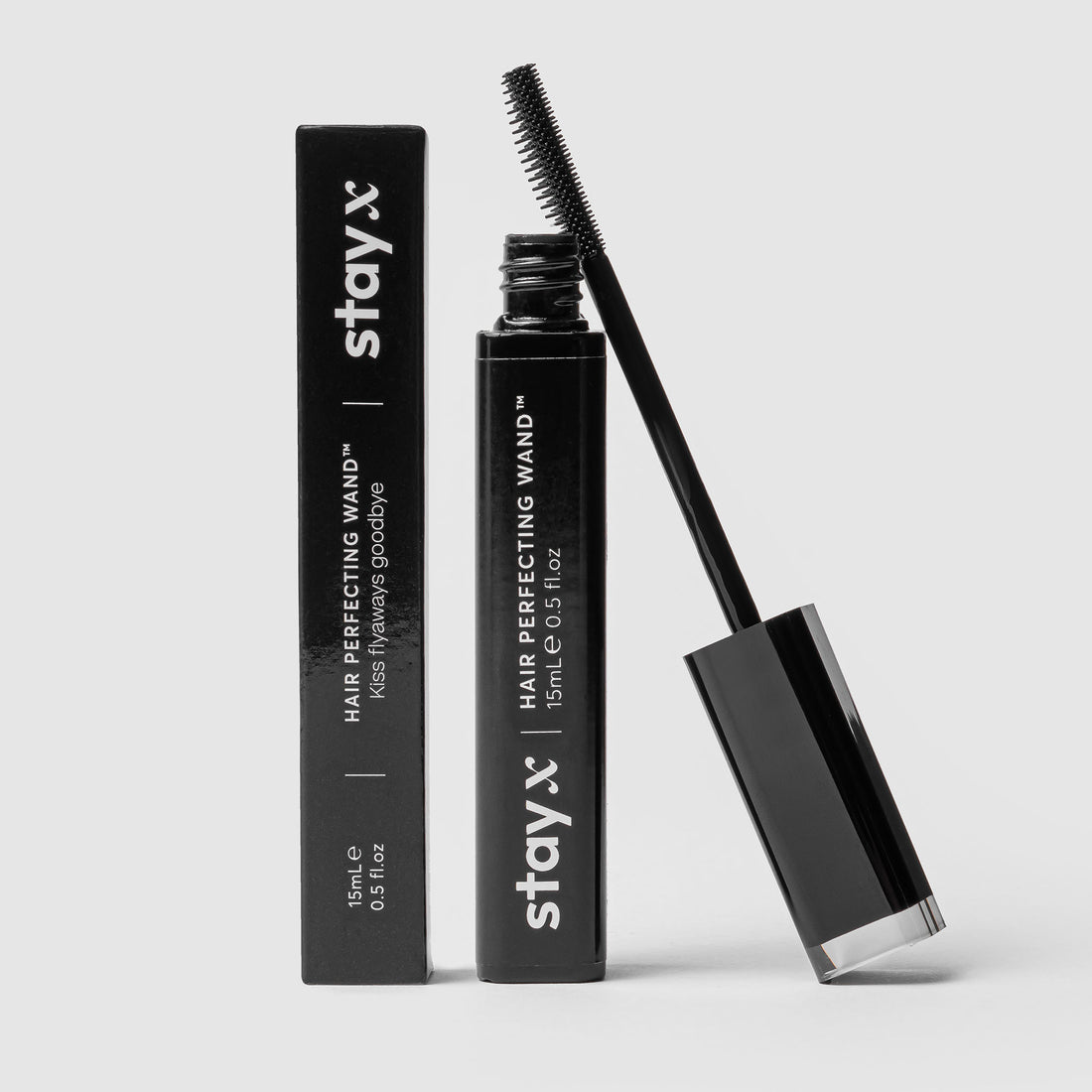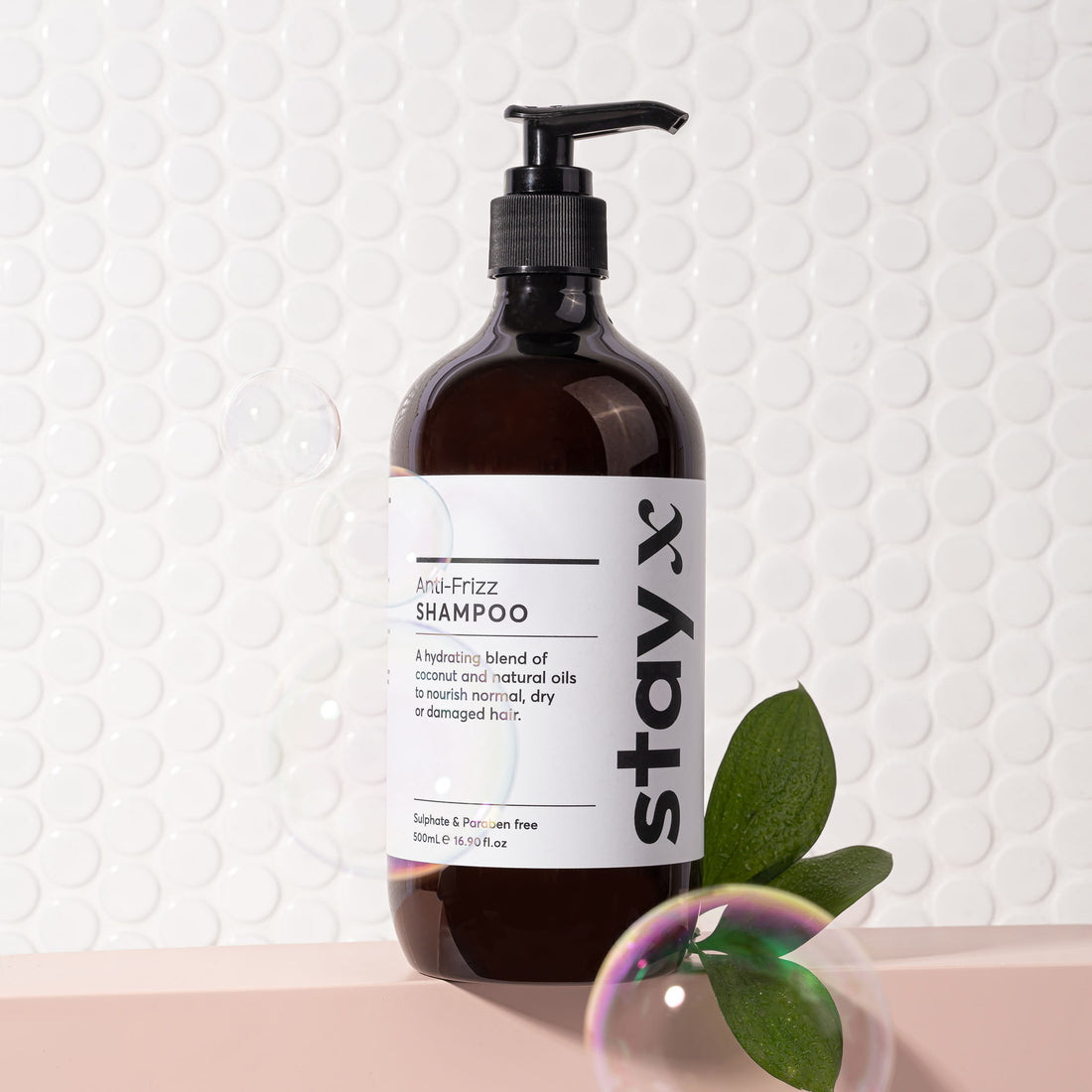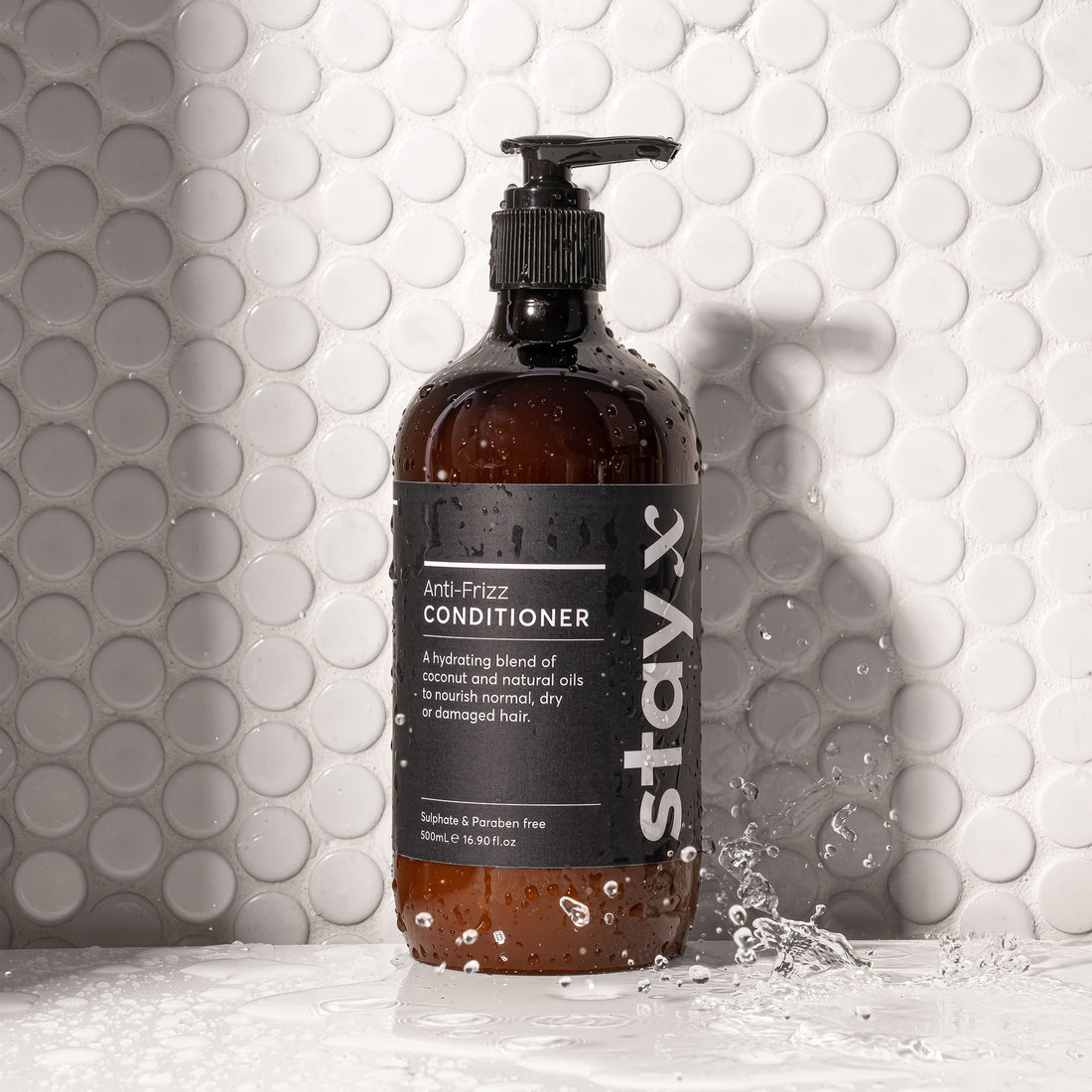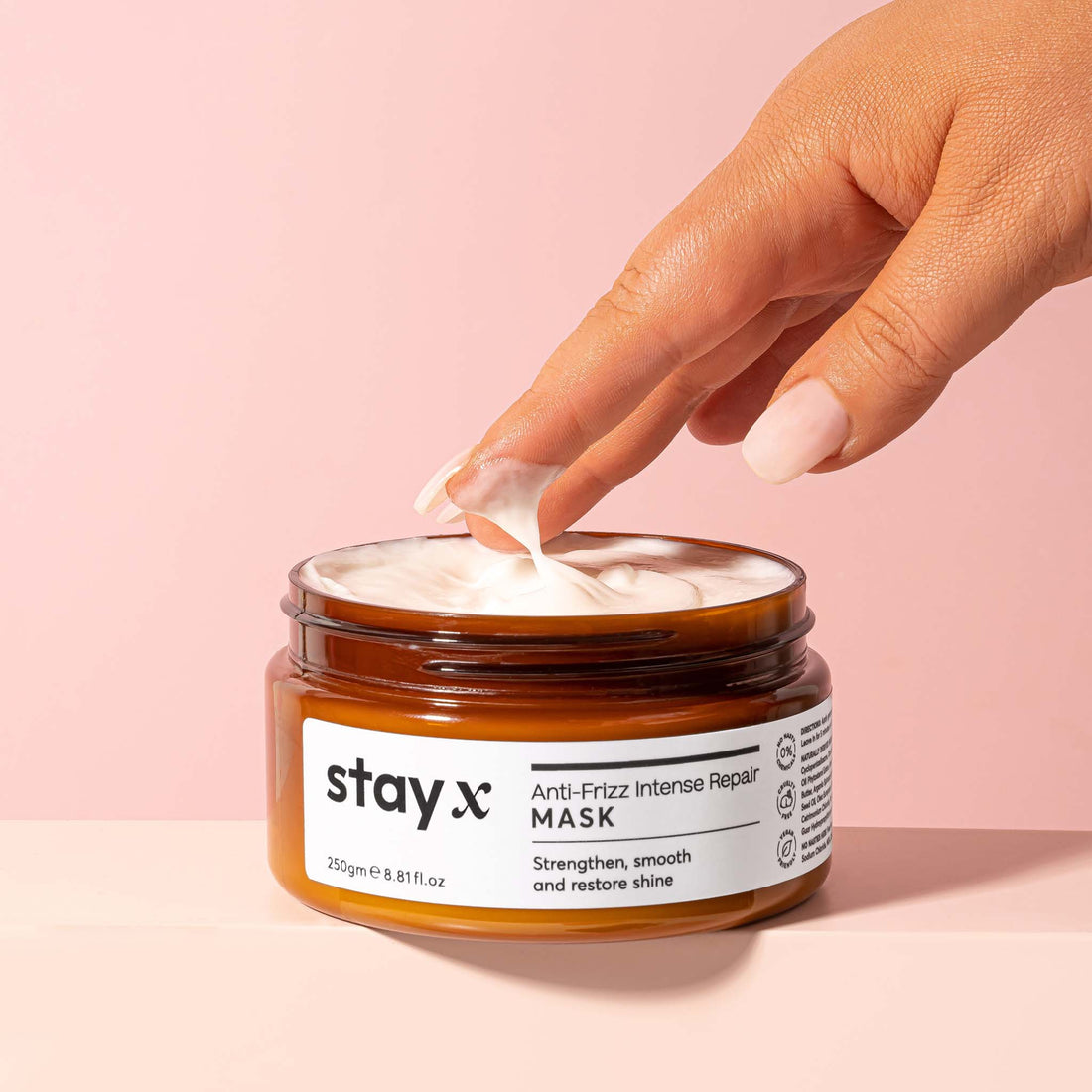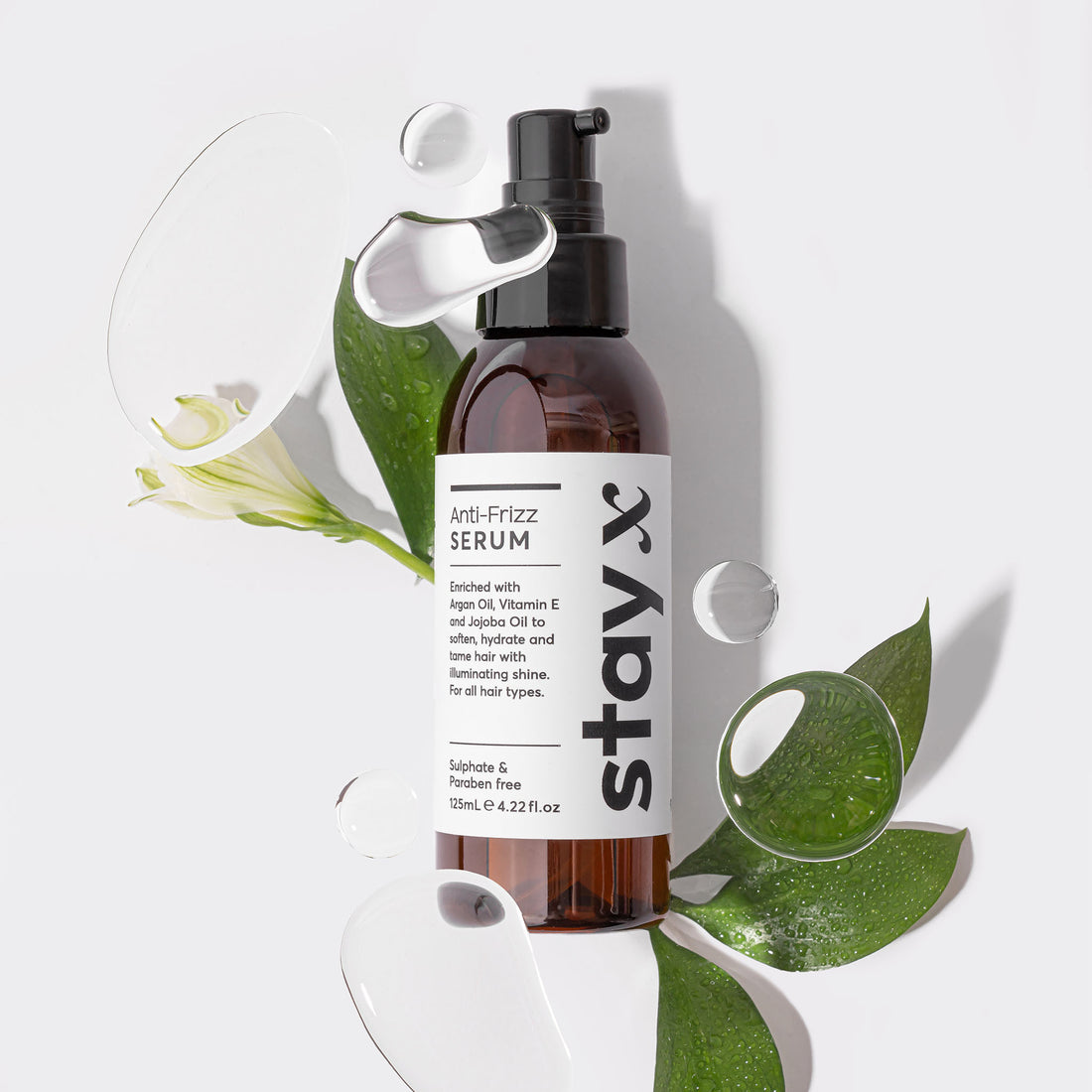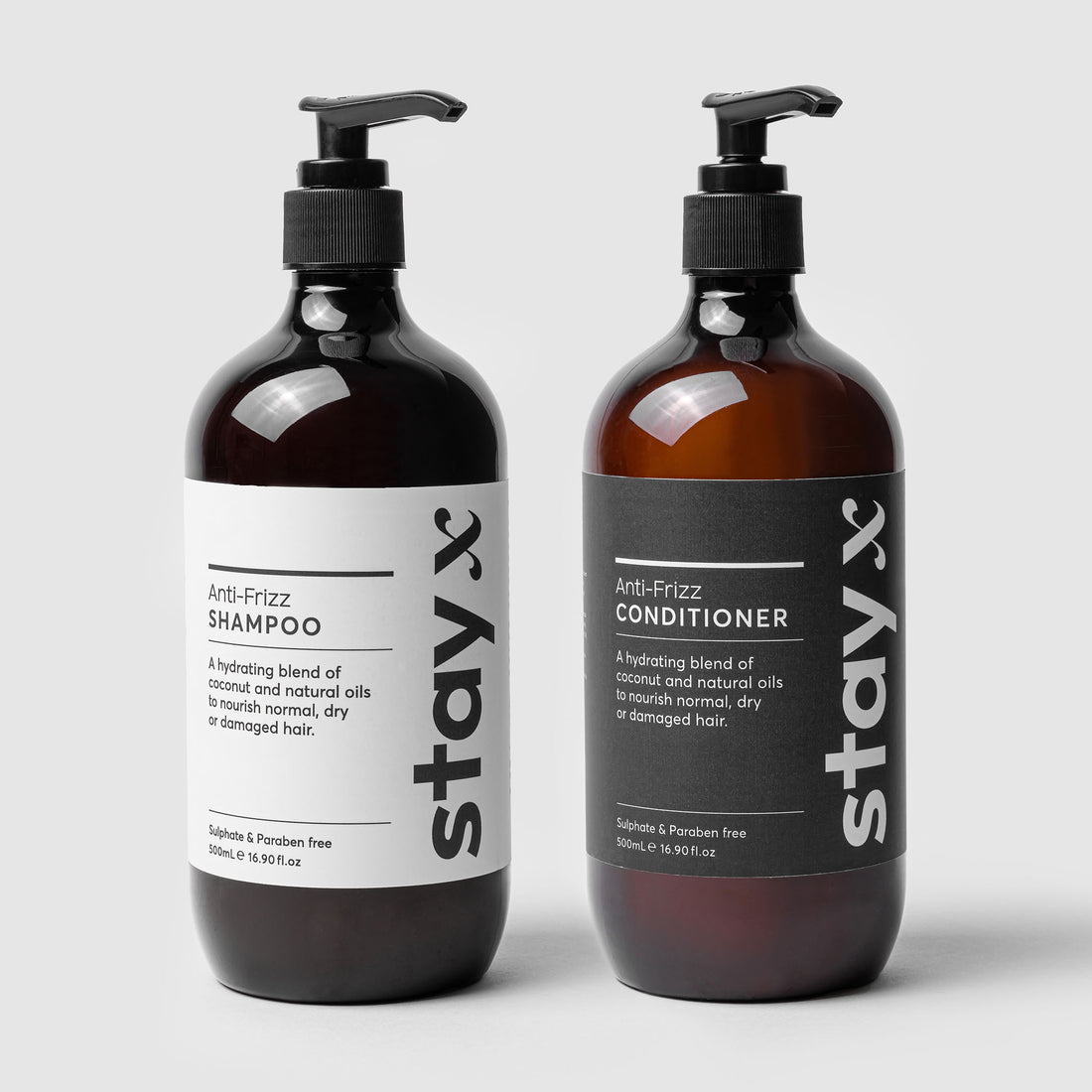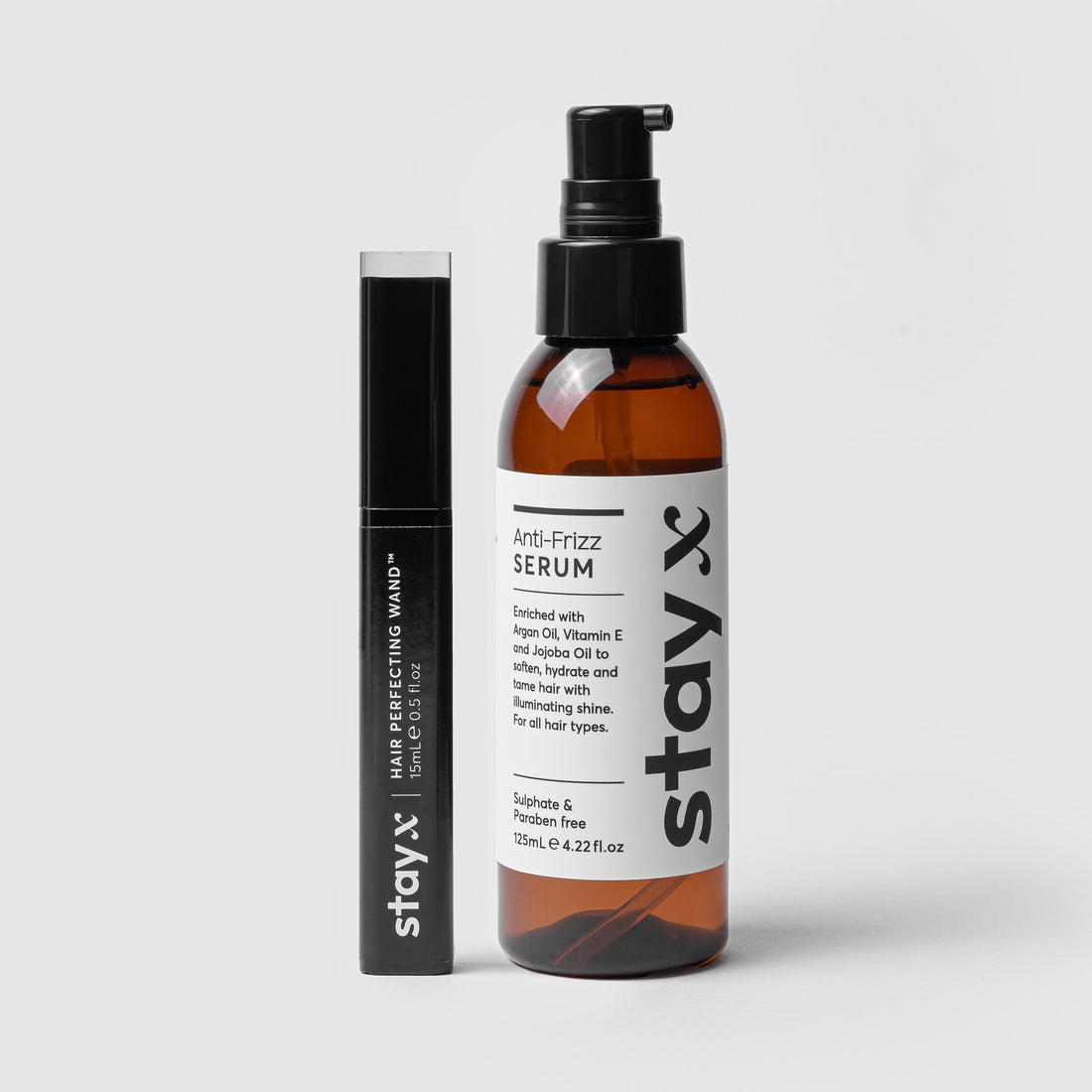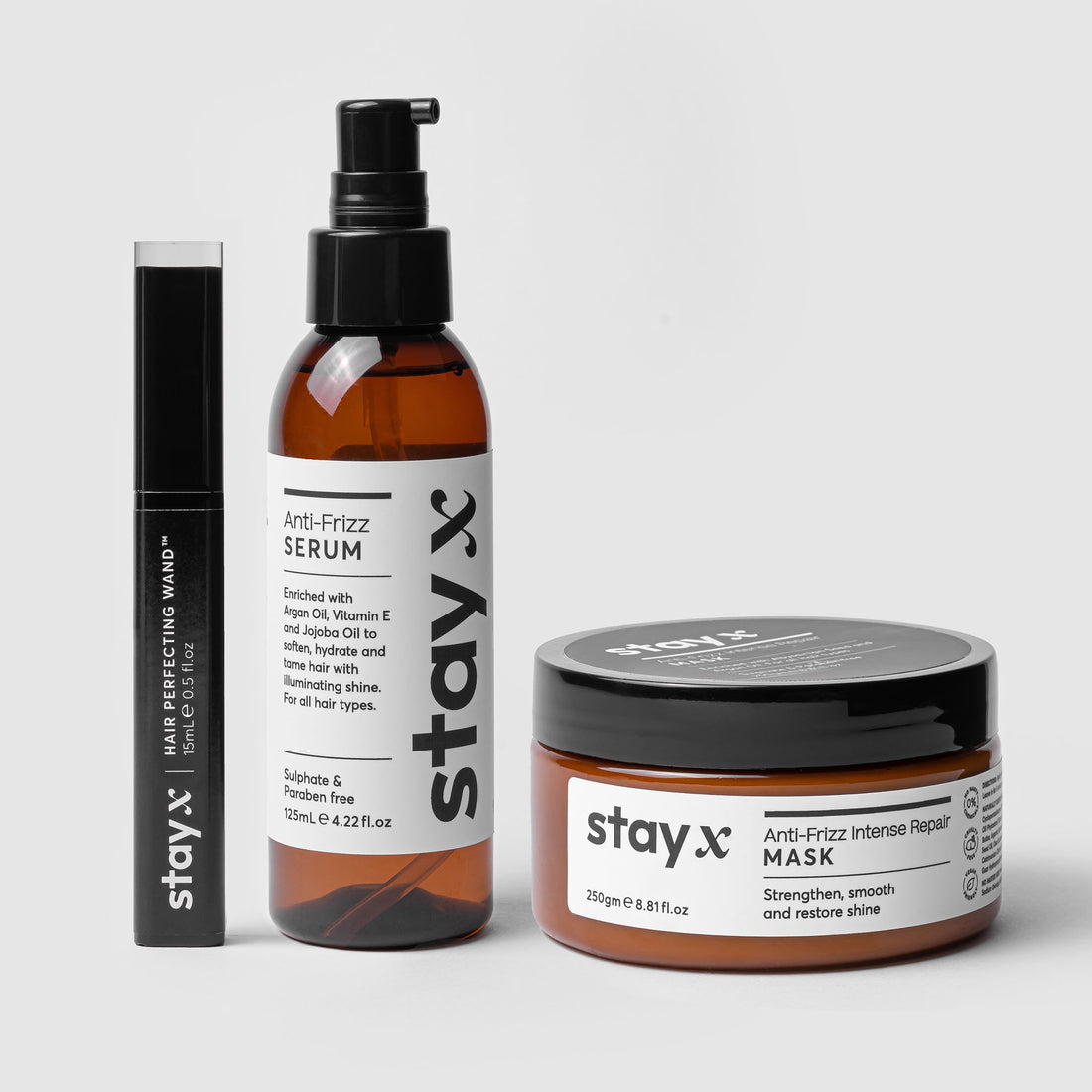Frizz is the worst frenemy—you’re forced to hangout together, but really, it’s a one-sided relationship. From wispy baby hairs to unruly flyaways, it seems like the perfect sleek ponytail is always out of reach! Or is it? To help smooth out your problem, our hair experts at Stay X collected the top causes of frizz.
1. Your hair is dryThirsty tresses are a common reason for frizz. And for most of you, the go-to solution is bathing your strands in lubricating serums (*ahem* Argan oil). But just one question: Is it actually working for you?
If your dry hair gets more greasy than glossy, it’s because you're adding moisture — not hydration. Ya, they’re not the same thing! Moisture comes from sebum (oil), while hydration comes from water. Healthy hair needs both to stay smooth and silky. Otherwise, if the ratios are off, your locks can go limp, lacklustre and frizzy.
2. You're stressed outWithout getting too technical about it, let's talk about the connection between stress and frizz.
When we're feeling nervous or unsafe, our bodies release cortisol—a stress hormone that triggers inflammation. Normally, in this state, we pay more attention to obvious symptoms like a bloated belly or puffy face, but did you know that our hair follicles get affected too?
Under stress, our hair follicles actually swell and shrink! Over time, if you’re continually stressed, your follicles will be too inflamed for healthy hair to pass through. As the cycle continues, the strands will grow thinner—plus, your scalp will produce less oil, worsening your flyaways even more.
3. Your hair is dyed
Love balayage? So do we… but NOT at the expense of your hair’s health! Depending on your hair type, your strands might be too weak to survive the harsh dying process—a key reason for frizz.
According to Master Colourist Alannah Jade from Brisbane’s Ella & Jade Salon, “Bleach breaks down the keratin bonds found in the hair and removes the pigment to ‘lift’ your hair.” This “lifting” action refers to how the chemicals peel away the strand’s cuticle (a protein-based coating that gives strength and shine). Once this layer is damaged, the hair shaft weakens, making it more prone to cracking, splitting and of course, frizzing!
4. Your hairspray is toxic
A lot of people ask us, “Is hairspray really that bad?”. And in response, we like asking a follow-up question: “Well, how much do you mind inhaling your hairspray?”.
Needless to say, when a substance is so harsh to the senses, that once it's airborne, you feel the burn and shut your mouth (and eyes), then ya, you know it’s bad! According to Medline Plus, hairspray contains propelled glycol and denature alcohol, along with other toxic chemicals.
These chemicals disrupt the pH balance of your scalp, leaving the follicles dry and irritated. Eventually, your scalp will struggle to produce oil (your hair’s natural conditioner), leaving you with parched roots, flyaways and frizz.
5. You manhandle your mane
Here’s a lesser-known rule about managing frizz: don’t brush your hair when wet! Your strands are at their weakest when soaked with water, so any aggressive brushing will tear or stretch the shaft.
As Hairstylist Kirsten Patterson recommends, "Always brush hair out dry before shampooing and conditioning because brushing knots out of wet hair can lead to major breakage." And if your hair gets matted after a shower, you can use a detangler brush to gently unravel your knots.
Want to banish frizz in seconds? The Stay X Perfecting Wand pins-down flyaways with lasting, invisible hold. Join the thousands of lovely ladies who travel everywhere with it, including Miss Multiverse 2020 (Valeria Sizova)!

Happy styling, lovelies! X


